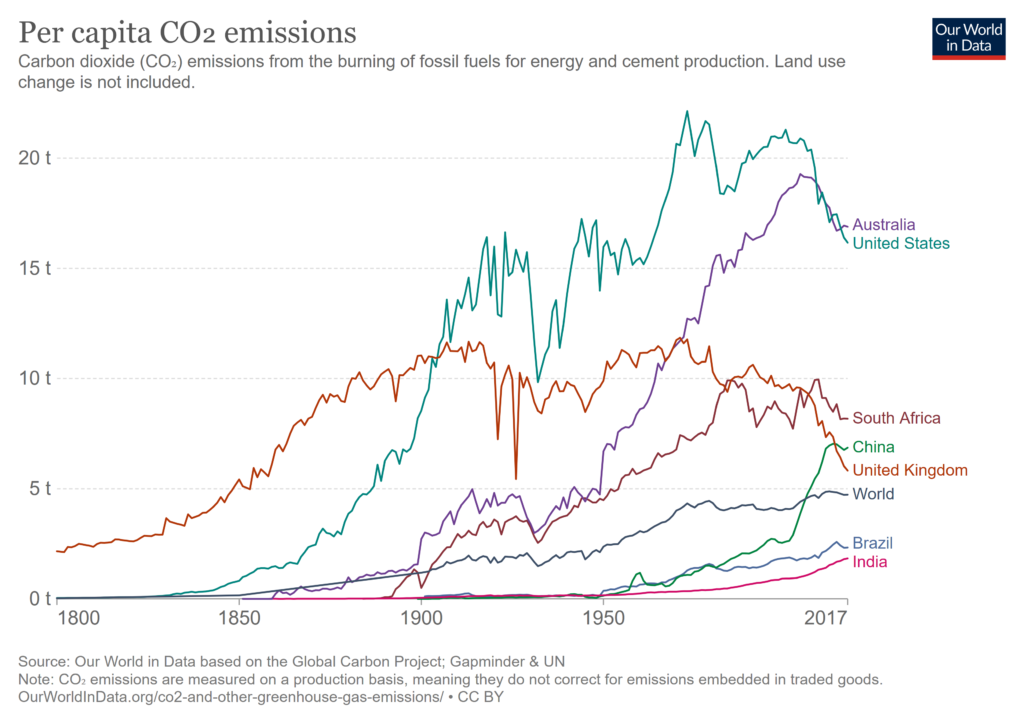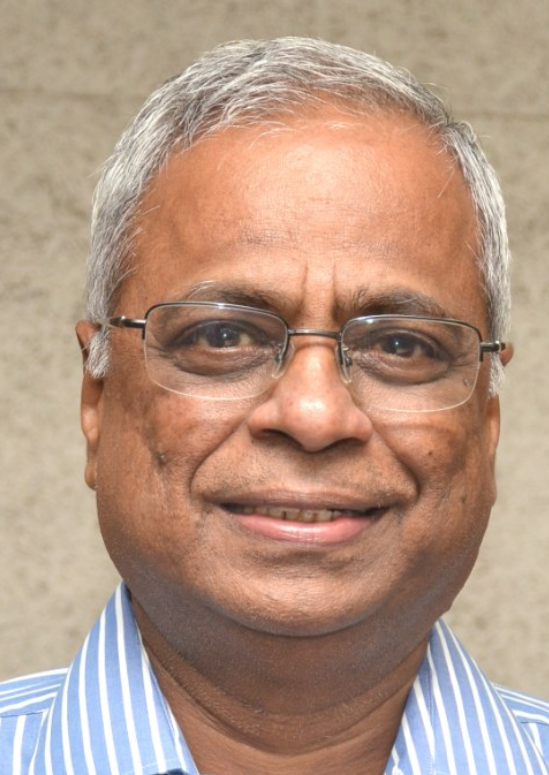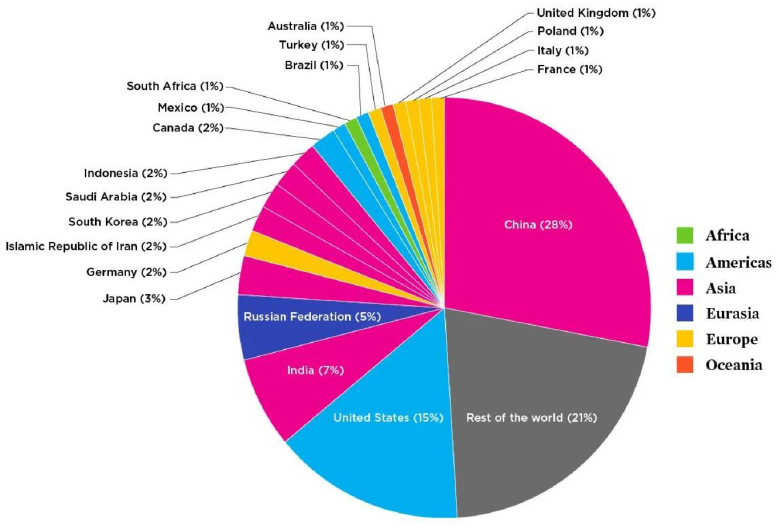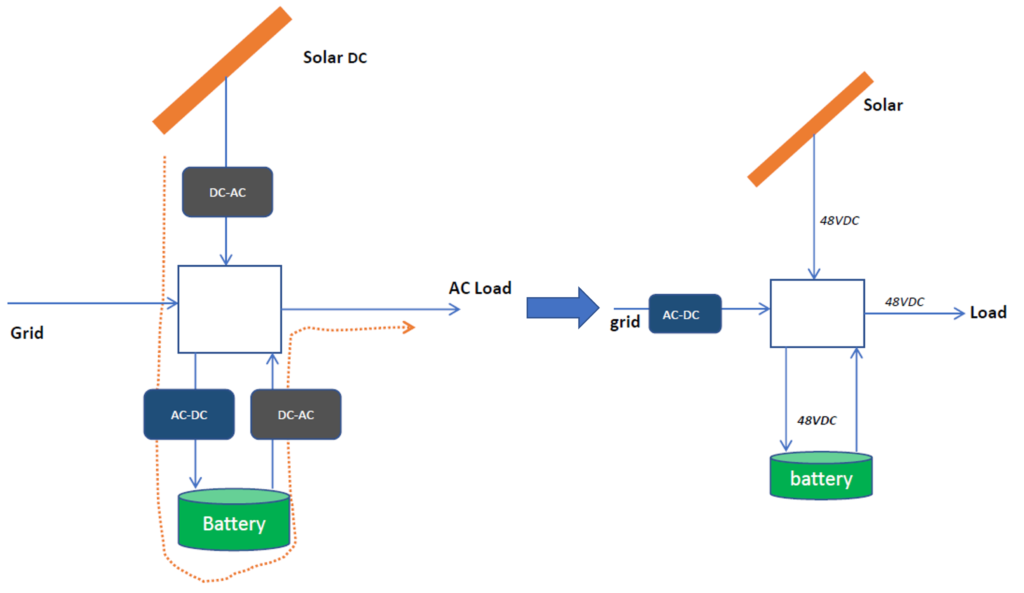
India’s Path to Net Zero or Why You Won’t See Teslas in India Any Time Soon
By: Chandu Visweswariah

In 1982, I registered for a class called “Communications Circuits” on the leafy campus of the Indian Institute of Technology (IIT) in Chennai, India. The instructor was Prof. Ashok Jhunjhunwala (picture on the left and bio here and here). Fast forward almost 40 years since then, and Prof. Jhunjhunwala (who I’ll call Prof. J. in the rest of this blog) has gained international renown with a Padma Shri award in India and National Academy of Engineering membership in the U.S. On the occasion of India’s 74th Independence Day, he recently spoke (recording here) about India’s path to 100% renewable energy in a webinar series called “Self-Reliant India.”
An important question that bears addressing is, “Why bother?” Doesn’t India have more pressing problems? After all, per capita emissions in India are nearly 10 times below the U.S. and 103rd in the world, and per-capita electricity consumption is 142nd in the world. Besides, global warming is due to historical emissions from the U.S. and other rich countries, so isn’t this someone else’s problem? Shouldn’t India focus on economic growth?

“No,” argued Prof. J. vehemently. First of all, due to India’s large population of 1.366 billion, the absolute emissions numbers are large – in fact, 3rd largest in the world behind China and the U.S. Second, growth in a wrong direction is not useful. Third, the health benefits of decarbonization are unquestionable. And finally, India has a real chance to be a leader in the clean energy space! The question of “Why bother?” was thus definitively put to bed!
India has witnessed great progress in the adoption of renewable electricity, with about 37% of installed capacity consisting of wind, solar and hydro, but this needs to grow rapidly. The fraction of actual energy supplied from renewable sources is lower because wind and solar don’t produce at full capacity all the time.
Prof. J. took pains to point out that the market conditions in India are different from other parts of the world, and India needs tailored solutions. One interesting example can be found in the interaction of technology and economics. Imagine a technology choice between a battery technology that is more expensive but can be cycled (i.e., charged and discharged) more times than a technology that has less up-front cost. The cheaper battery would have to be replaced sooner, but high interest rates can make the cost of capital so much higher that the less expensive battery is financially superior. Prof. J. illustrated this principle with a specific example of Lithium Titanate (LTO) batteries being less desirable in an Indian context than Lithium Nickel Manganese Cobalt (NMC) batteries despite conventional wisdom.

Many commercial complexes in India use as much as 40% of their electricity for air conditioning. Prof. J. presented a case study of a building on the IIT campus in Chennai that uses an insulated chilled water tank that runs entirely on solar energy. When the sun is not shining, the chilled water continues to keep the building cool until chilled water can be replenished. His detailed financial analysis shows that commercial complexes spend ₹22 ($0.31) per kWh on diesel-generated electricity when the grid fails, ₹11 ($0.15) per kWh on grid electricity, and ₹7.60 ($0.11) with a chilled water system. In other words, all commercial complexes, malls, movie theaters, hospitals, colleges and the like, nationwide, can shift to a solar plus chilled water system and save money while greening the environment!
India suffers tremendously from air pollution. It has 14 of the 20 most polluted cities in the world and endures concomitant health problems. Gasoline consumption is up 6x in the last 40 years and imports cost ₹653.6 billion ($9.1 billion) of precious foreign exchange. The transition to Electric Vehicles (EVs) is therefore urgent and compelling. But you won’t see too many Teslas in India any time soon. For one thing, 84% of vehicles are 2- and 3-wheelers, and the conversion to electric is most needed in that sector. For another, affordability is key – what the market desperately needs are electric 2-wheelers under ₹50,000 ($694) and cars under ₹4,00,000 ($5,555).
Prof. J. proposed a disarmingly simple solution: battery swapping. The most expensive part of an EV is the battery. If the battery is swappable, then the vehicle owner doesn’t need to own the battery – it is just rented until it is drained, and then it gets swapped out at the modern equivalent of a gas station. Consumers pay a low up-front price for the vehicle. For battery swapping, they pay roughly what they would for gasoline, and the government (or private infrastructure sector) gets to pocket the difference in order to fund the batteries and charging infrastructure! An added advantage is that batteries can be charged under ideal conditions – at the right temperature and at a sedate rate of charging – to maximize their life.
India can leapfrog technology generations in many ways, much like many Indians vaulted directly to cell phones without ever having a landline, or directly to smartphones without ever using a “dumb” phone. In remote parts of India where there is no electric grid, just a single battery-paired solar panel that allows a fan, an LED bulb and a charging outlet dramatically changes the life of residents leading to higher security, better education and an improved quality of life. Prof. J. pioneered installation of such a system at 60,000 homes in India, and in doing so, reignited a 100-year debate: AC or DC?

AC is alternating current used by all our grids and home appliances. DC is direct current which is what solar panels produce. Consider a home that has solar panels and battery storage in the garage. On the left of the figure is the situation where the appliances in the house (lights, outlets, appliances) run on AC. So, the DC that is produced by the solar panels is converted to AC. However, on a nice sunny day, the excess energy is converted back to DC to store in a battery, which is then converted back to AC when the battery is discharged. And the biggest irony is that many loads (e.g., laptops, LED bulbs) require DC so there is yet another conversion, and other loads (e.g., air conditions and fans) can be made more efficient with DC using brushless motor technology. Needless to say, every conversion adds inefficiency and cost to the system.
Compare that to the figure on the right in which the house runs on a 48 V DC system and no conversions are required except when sending power to or receiving power from the grid. In other words, optimize local considerations instead of grid considerations. And who’s to say whether future grids may well also carry DC (while noting that stepping up and stepping down the voltage of DC is harder than with AC)?
The conclusions from Prof. Jhunjhunwala’s compelling talk were clear: India must move rapidly to adopt renewable energy. Choices conducive to local conditions should be made taking into account, for example, higher interest rates and the predominance of highly affordable 2-wheelers. Given that air conditioning represents a massive proportion of the electrical load, chiller tanks can be an effective and economical means of energy storage. And while Westinghouse and Edison are probably turning in their grave, converting DC to AC only to convert it back to DC and then around the mulberry bush again makes absolutely no sense! Let DC prevail!
3 thoughts on “India’s Path to Net Zero or Why You Won’t See Teslas in India Any Time Soon”
Leave a Reply to Arun Joseph Cancel reply
You must be logged in to post a comment.


Wow…very interesting! You attended his lecture in 1982, and reconnected 40 years later as an energy expert. Prof Jhunjhunwala must have felt proud as one of your teachers! Grateful that he is still hard at it solving big issues. Maybe we can all blog in 2061 about having made some difference …
Good read of10 mins – Well written article, and nicely put down – thanks
Chandu: Thanks for this blog on India’s challenges and the value of the DC to DC system.